- Joined
- Apr 21, 2010
- Messages
- 5,610
Hey everyone, I came across this super cool website ismy.blue which shows you colors that you identify as green or blue, and then it calculates your specific boundary/hue dividing what you call green from what you call blue.
More specifically, according to the website, "[t]his is a color naming test designed to measure your personal blue-green boundary."
Per the website, IT IS FOR ENTERTAINMENT PURPOSES ONLY!
And, yes, I was entertained!
I took it twice!!
The 1st time it came up with hue 175 as my color boundary ("Your boundary is at hue 176, bluer than 68% of the population. For you, turquoise is green.").
The 2nd time the result was "hue 176, bluer than 68% of the population. For you, turquoise is green."
I already knew that I identify turquoise as more green than blue but it was interesting to see that I am in the minority (32%) doing so.
So, if you're game, check it out and let me know what hue your blue-green boundary is; only takes a maybe half a minute; happy Saturday!
ismy.blue
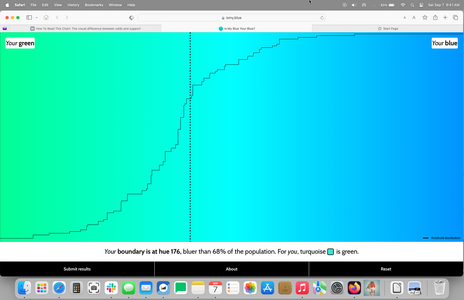
Fyi, I found this in today's Washington Post "How to Read This Chart" column by Philip Bump (who I follow and adore). https://s2.washingtonpost.com/camp-...66dc5c8bf1cf6e09443451c0&linknum=2&linktot=63

More specifically, according to the website, "[t]his is a color naming test designed to measure your personal blue-green boundary."
Per the website, IT IS FOR ENTERTAINMENT PURPOSES ONLY!
And, yes, I was entertained!
I took it twice!!
The 1st time it came up with hue 175 as my color boundary ("Your boundary is at hue 176, bluer than 68% of the population. For you, turquoise is green.").
The 2nd time the result was "hue 176, bluer than 68% of the population. For you, turquoise is green."
I already knew that I identify turquoise as more green than blue but it was interesting to see that I am in the minority (32%) doing so.
So, if you're game, check it out and let me know what hue your blue-green boundary is; only takes a maybe half a minute; happy Saturday!
ismy.blue

Fyi, I found this in today's Washington Post "How to Read This Chart" column by Philip Bump (who I follow and adore). https://s2.washingtonpost.com/camp-...66dc5c8bf1cf6e09443451c0&linknum=2&linktot=63

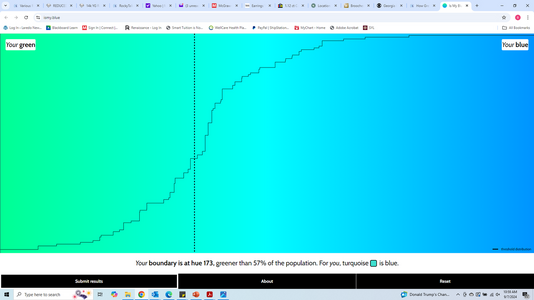
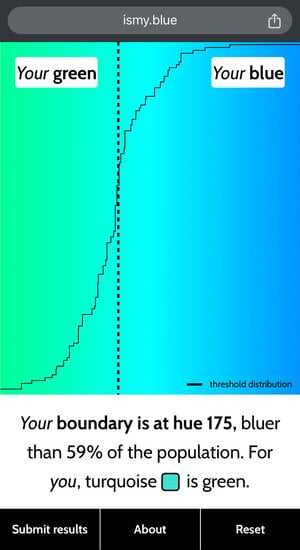

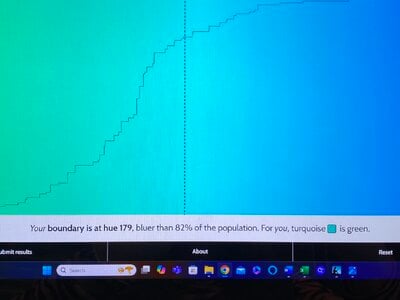
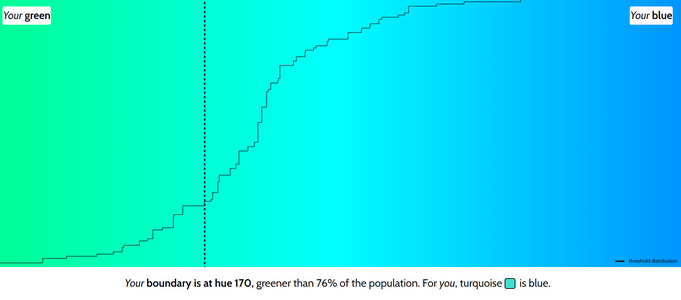
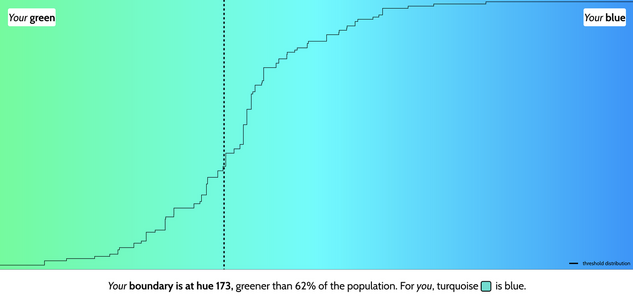
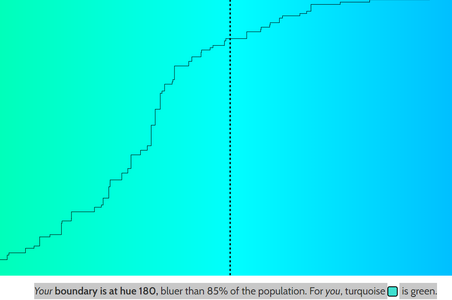
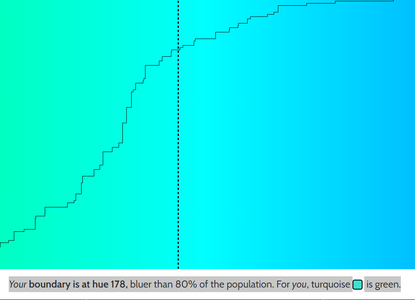
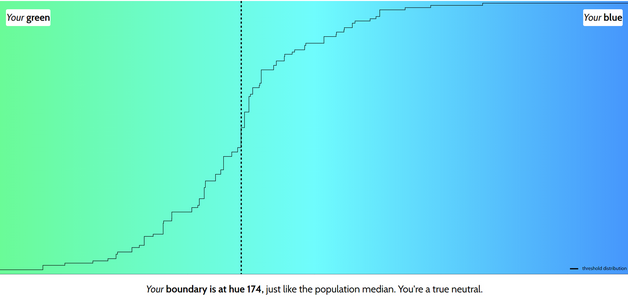
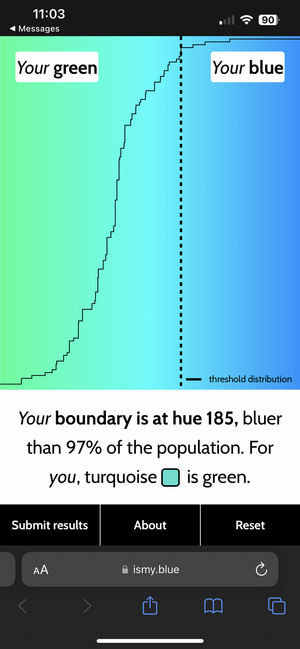
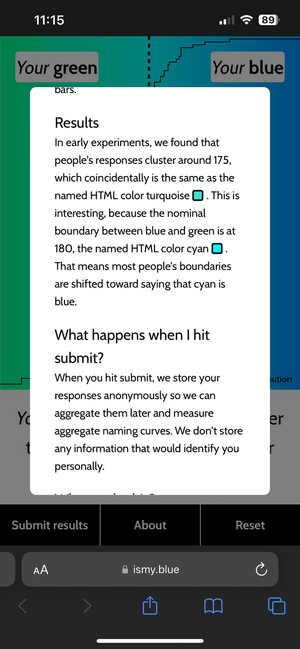
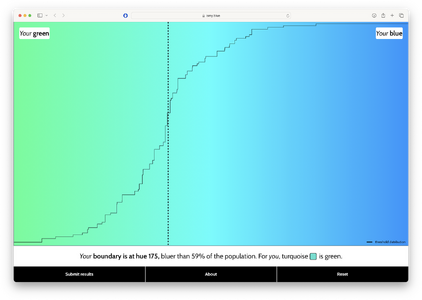

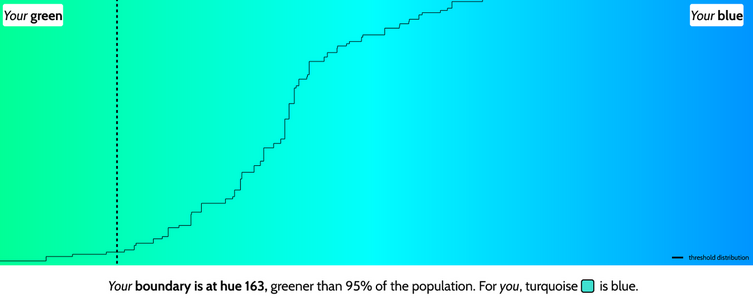
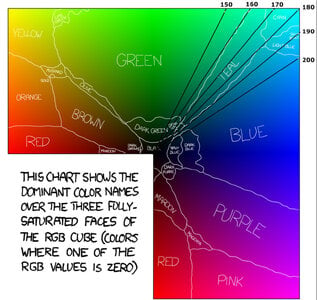
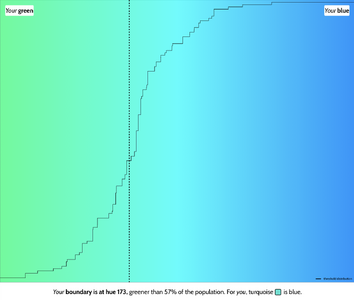
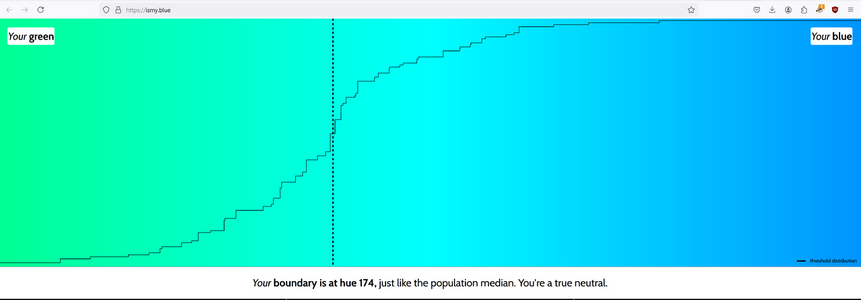
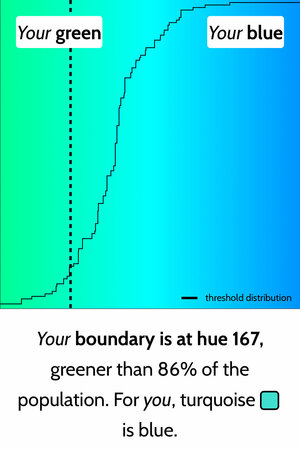
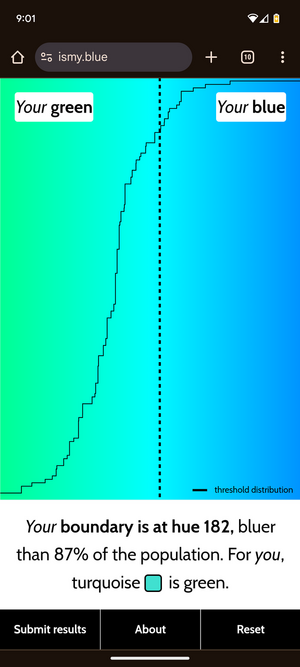
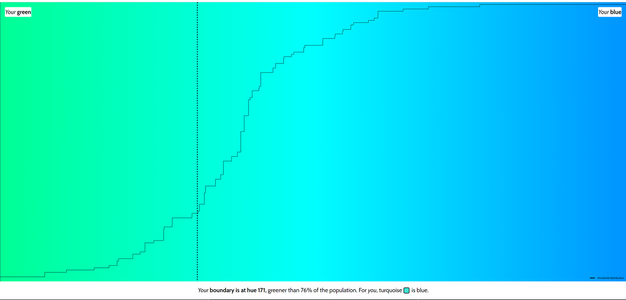


300x240.png)